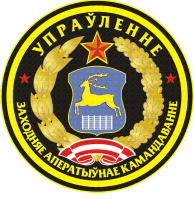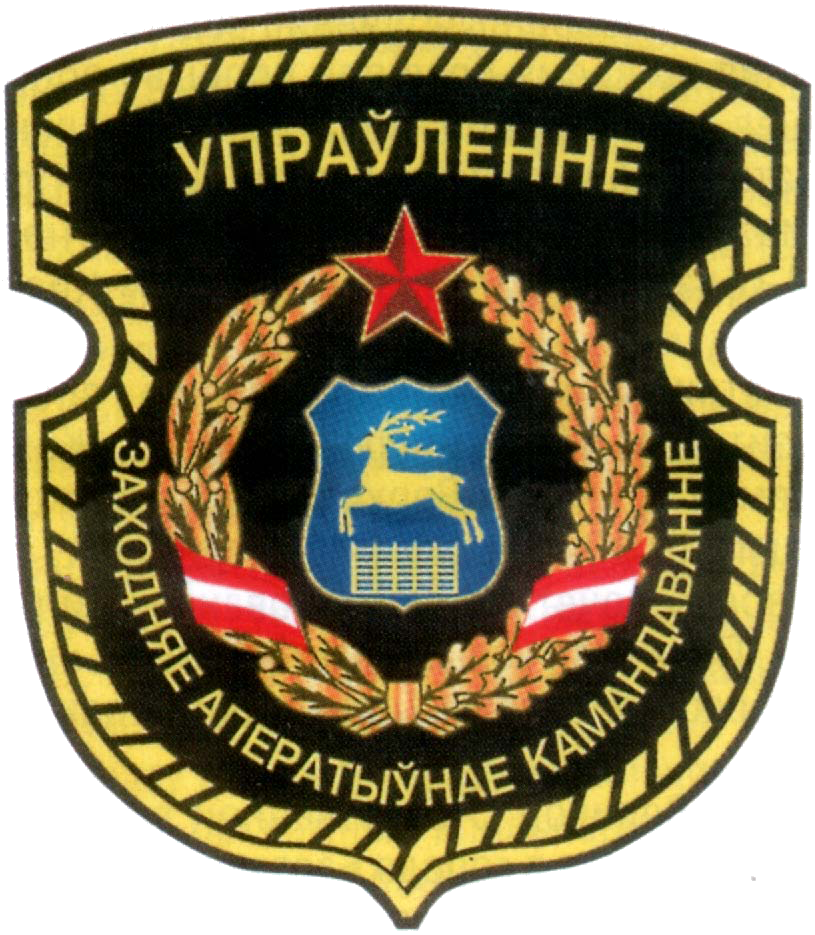 Western Operational Command
Western Operational Command
History


Historical brief
The history of the Western Operational Command goes back to World War II. On 1 July 1941, nine days after Germany invaded the Soviet Union, the 28th Army was established by the Supreme Headquarters in the Arkhangelsk Military District, northwestern Russia. It comprised the 30th and 33rd Rifle Corps, 27th Mechanised Corps, as well as artillery and other units.
In July – August 1941, the army fought in the Battle of Smolensk, delivering counterattacks from Roslavl to Pochinki and Smolensk. Having achieved good results at the initial stage, in early August the army had to fight heavy battles in encirclement. Its commander Lt. Gen. V. Kachalov was killed in one of such battles. Having broken out of the encirclement, on 10 August 1941 the army was disbanded.
On 15 November 1941, the 28th Army was reestablished in the Moscow Military District. It consisted of the 359th, 363rd, 367th and 375th Rifle Divisions, as well as artillery and other units.
On 1 December 1942, the army was tasked to construct the Yaroslavl Fortified Area and a defensive line along the eastern bank of the Volga between the rivers Sheksna and Unzha.
From May to July 1942, the army suffered heavy losses in a failed offensive during the Battle of Kharkov and fierce defensive battles during the Battle of Voronezh. On 31 July 1942, the army was disbanded again.
On 5 September 1942, the 28th Army was reestablished in the Stalingrad Military District. It included the 34th Guards Rifle Division, 248th Rifle Division, 52nd, 152nd and 159th Rifle Drigades, 78th and 119th Fortified Areas and other units.
On 30September 1942, the army joined the Stalingrad Front and fought in the Battle of Stalingrad. In September and October, it frustrated the enemy’s attempts to break through to the Volga’s mouth in southwestern Russia and cut the Astrakhan – Kizlyar railroad. In December, the army conducted an offensive towards Elista, Salsk and Rostov-on-Don and took Elista on 31 December.
The offensive operation was successful. Having taken Salsk and Rostov-on-Don, on 20 February 1943 the army approached the Mius River and took on the defensive.
From August to October 1943, the army participated in the Donbass and Melitopol Strategic Offensives. As a result, the Soviet forces liberated the Donbass region in eastern Ukraine, reached the lower Dnieper, the Crimean isthmus and secured a bridgehead on the southern coast of the Sivash Gulf.
From February to March 1944, the army fought in southern Ukraine and liberated Kherson, Nikolayev and many other towns and villages.
In June and July 1944, the 28th Army fought within the 1st Belarusian Front, defeating German forces in Belarus. The army breached Nazi defences, forced the Western Bug River near Brest, crossed the Soviet border and kept following the enemy on the Polish territory.
In October 1944, the army was assigned to the 3rd Belarusian Front and took part in the East Prussian Offensive. Committed into action from the second echelon, the army completed penetration of enemy positions at the border and took Stalluponen (now Nesterov).
In January – March 1945, the army broke through the enemy lines and advanced to the central part of East Prussia. As a result, the Soviet troops took the Baltic coast southwest of Konigsberg, cutting off withdrawal routes for the enemy’s army group.
When the German forces besieged in Konigsberg were eliminated, the 28th Army joined the 1st Ukrainian Front and fought in the Battle of Berlin.
The army met the end of the war near Prague. Participating in the Prague Offensive (6–11 May 1945), it advanced to Prague from northeast and received the surrender of part of a large Nazi army group.
During the war, 214 service members of the 28th Combined-Arms army were honored the Hero of the Soviet Union, 106,167 soldiers were decorated with various orders and medals, 136 persons became full cavaliers of the Order of Glory and the whole personnel were decorated with medals For the Victory over Germany, For the Capture of Berlin and For the Capture of Konigsberg.
In 1968, the army received a major Soviet award, the Red Banner.
A number of prominent generals served and commanded the army in different years. Among them are M. Gareyev, V. Lobov, B. Gromov, L. Maltsev, A. Kvashnin, S. Gurulyov and others.
When WWII was over, the 28th Combined-Arms Army was assigned to the Belarusian Military District. Headquartered in Grodno, its troops were deployed in western Belarus. The army’s units took part in the 1954 Totskoye nuclear test, as well as some other major manoeuvres: the Dnepr, Nyoman, Dunai, Zapad 81, etc.
With the emergence of the Republic of Belarus as an independent state, the country’s Armed Forces were set up from troops of the Belarusian Military District.
In 1993, the 28th Combined-Arms Army was reorganised into the 28th Army Corps.
As a result of reforms held in the Belarusian Armed Forces, in December 2001 it was transformed into the Western Operational Command.





